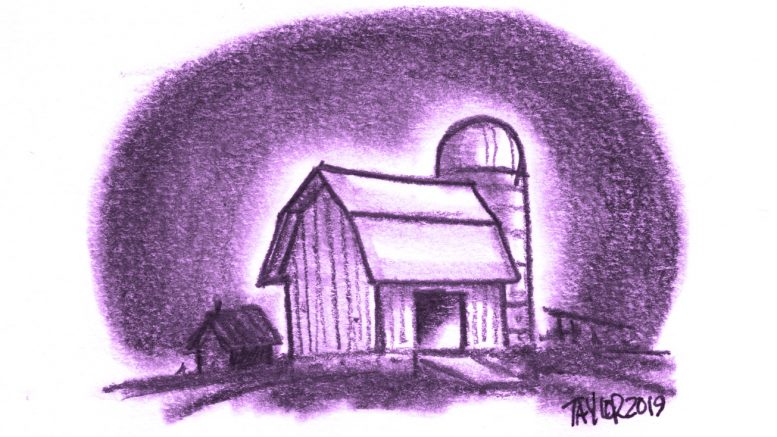
If we don’t address this looming problem, an unprecedented national hunger crisis will be imminent.
By Vera L Chang & Seth M Holmes
The Guardian (4/14/20)
Mike Pence called US farm and other food workers “heroic Americans” last week for doing “vital” work amid the coronavirus pandemic and said the government would “work tirelessly” to ensure their workplace safety.
Earlier in the month, the Department of Homeland Security had classified workers pulling onions, collecting eggs, processing beef and others as “essential”, and part of the “critical infrastructure workforce” that has a “special responsibility to maintain [a] normal work schedule”.
Though their designation as essential workers is apt, relief measures recognizing their importance haven’t been offered. Congress’s $2tn pandemic stimulus package specifically excludes food workers, leaving them without basic safety equipment like masks and hand sanitizer, benefits like healthcare and childcare, protections like physical distancing, and hazard pay. Food workers have also been left out of state aid.
As much of the country shelters in place, we put the workers who save us from starvation on the frontlines of battle with no support.
Protections are urgently needed. While Americans have been instructed to maintain 6ft from others, food workers labor shoulder-to-shoulder in the country’s mega-processing plants. Farmworkers pack into buses to and from orange groves and other harvest sites. They share cramped rooms, even beds, with strangers, and lack ventilation or access to sanitation. “The company isn’t doing anything to give workers space. We’re close to each other all the time,” a Tyson poultry worker in Arkansas stated. She’s a member of Venceremos, a group of poultry workers petitioning companies to provide sick leave.
Agonizing choice
Yet for many food workers, absence from work due to illness risks termination. And these workers have high rates of hypertension and respiratory impairments – conditions linked to severe Covid-19 disease – because of their proximity to chemicals known to be lung irritants. Essential food workers are paid minimum wages while enduring perilous conditions. They face an agonizing choice: stay home without income for rent or go to work and risk infection.
“We’re in a country where people want our labor but don’t care about our lives. Our human rights have been denied, but our work is being deemed essential. The injustice of the system is laid bare,” explained Enrique Balcazar, an organizer with Migrant Justice, a dairy worker-led organization pressing the state of Vermont to include workers’ needs in its crisis response.
As much of the country shelters in place to slow the spread of the virus, we put our lowest-paid workers at the frontlines of battle with no support. But the nation’s 2.4 million farmworkers, 148,000 processing workers and other food chain workers are imperative to our economy, collective health and basic survival. They support the national interest. Danger to food workers is a danger for us all. And some of them are starting to die while working to feed us. …
- Warren & Khanna’s “Essential Workers Bill Of Rights” Cheered As Much-Needed Protections For Those On Frontlines Of Crisis — “If we can find the resources to bail out the cruise and airline industries and other big corporations, we can support the people who risk their lives every day to care for the ill, stock store shelves, and care for children.” … Read The Rest
(Commoner Call cartoon by Mark L. Taylor, 2020. Open source and free for on-derivative use with link to www.thecommonercall.org )
*****
Dumped Milk, Smashed Eggs, Plowed Vegetables: Food Waste Of The Pandemic
1BusinessWorld (4/11/20)
In Wisconsin and Ohio, farmers are dumping thousands of gallons of fresh milk into lagoons and manure pits. An Idaho farmer has dug huge ditches to bury 1 million pounds of onions. And in South Florida, a region that supplies much of the Eastern half of the United States with produce, tractors are crisscrossing bean and cabbage fields, plowing perfectly ripe vegetables back into the soil.
After weeks of concern about shortages in grocery stores and mad scrambles to find the last box of pasta or toilet paper roll, many of the nation’s largest farms are struggling with another ghastly effect of the pandemic. They are being forced to destroy tens of millions of pounds of fresh food that they can no longer sell.
About 5 percent of the country’s milk supply is currently being dumped and that amount is expected to double if the closings are extended over the next few months.
The closing of restaurants, hotels and schools has left some farmers with no buyers for more than half their crops. And even as retailers see spikes in food sales to Americans who are now eating nearly every meal at home, the increases are not enough to absorb all of the perishable food that was planted weeks ago and intended for schools and businesses.
The amount of waste is staggering. The nation’s largest dairy cooperative, Dairy Farmers of America, estimates that farmers are dumping as many as 3.7 million gallons of milk each day. A single chicken processor is smashing 750,000 unhatched eggs every week.
Many farmers say they have donated part of the surplus to food banks and Meals on Wheels programs, which have been overwhelmed with demand. But there is only so much perishable food that charities with limited numbers of refrigerators and volunteers can absorb.
Export market drying up
And the costs of harvesting, processing and then transporting produce and milk to food banks or other areas of need would put further financial strain on farms that have seen half their paying customers disappear. Exporting much of the excess food is not feasible either, farmers say, because many international customers are also struggling through the pandemic and recent currency fluctuations make exports unprofitable.
“It’s heartbreaking,” said Paul Allen, co-owner of R.C. Hatton, who has had to destroy millions of pounds of beans and cabbage at his farms in South Florida and Georgia. …
*****
Farm To Table: The Coronavirus & America’s Vulnerable Food Supply Chain

By Meghna Chakrabarti & Grace Tatter
On Point / WBUR (4/15/20)
Could the coronavirus pandemic disrupt the food supply chain? We look at how food gets to your store and where the supply line is vulnerable.
Guests:
- Jackie Hendry, health care reporter at South Dakota Public Broadcasting. (@JackieHendrySD)
- Michael Pollan, writer and journalist. Author of several books about food, including “The Omnivore’s Dilemma: A Natural History of Four Meals” and “In Defense of Food: An Eater’s Manifesto.” (@michaelpollan)
- Bob LaBonne, president and CEO of LaBonne’s Market. (@LaBonnes)
Link To Story, Transcription And Audio

